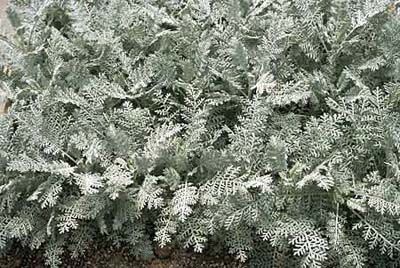
Drought-resistant annuals are perfect for gardeners looking to create colorful, lush landscapes while conserving water. In this guide, we’ll explore the benefits of water-wise gardening, introduce you to the top drought-tolerant annuals, and provide expert tips for creating a stunning, eco-friendly garden that can withstand even the driest summers.
Understanding Drought-Resistant Annuals
Drought-resistant annuals complete their life cycle in one growing season and have adapted to survive in areas with limited water. These hardy plants are ideal for regions with water restrictions or for gardeners seeking low-maintenance options. These plants have various mechanisms to conserve water—deep root systems, waxy or hairy leaves to reduce water loss, and the ability to enter dormancy during extremely dry periods.
“Where drinking water is scarce, it doesn’t make sense to use so much of it on our lawns and flowers,” says landscape designer Nicole Lopez, who works in drought-prone Santa Monica, California. “You need to match plants to the climate that you live in. It just doesn’t work the other way around. “
Benefits of Planting Water-Wise Annuals
Incorporating drought-resistant annuals into your garden offers numerous advantages:
- Water conservation: These plants require less frequent watering, helping to reduce water usage and lower utility bills.
- Low-maintenance: Drought-tolerant annuals are generally hardier and require less care than their thirstier counterparts.
- Eco-friendly landscaping: By reducing water consumption, you’re contributing to environmental conservation efforts.
- Colorful displays: Many drought-resistant annuals produce vibrant blooms, adding beauty to your garden even in dry conditions.
- Adaptability: These plants can thrive in various soil types and sun exposures, making them versatile choices for different garden settings.
Factors To Consider When Choosing Drought-Tolerant Annuals
Here’s what you need to think about when you pick our annuals for a dry area:
Climate and Hardiness Zones
Your local climate and Hardiness Zone should be a top factor in your choices. These help you determine which plants will thrive in your area. Consult the USDA Hardiness Zone Map to identify your Zone and use it to choose the annuals best for your region.
Soil Type and Drainage
Most drought-tolerant annuals prefer well-draining soil. Sandy or loamy soils are ideal since they let excess water drain quickly. If your soil is heavy clay, consider mixing it with organic matter to improve drainage and aeration.
Sun Exposure
Many drought-resistant annuals thrive in full sun, but some can tolerate partial shade. Assess the sun exposure in your garden and choose plants that match these conditions for optimal growth and blooming.
Top Drought-Resistant Annuals for Your Garden
Here are the best drought-resistant annuals.
Common Zinnia (Zinnia Elegans)
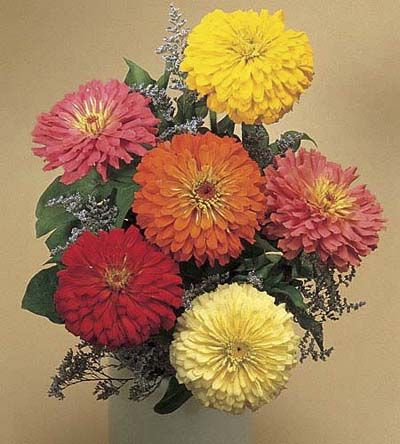
Zinnias are beloved for their festive, hot-colored flowers, as well as whites, pale pinks, creams, and greens. These cheerful blooms grow 6 to 48 inches tall and prefer full sun and well-drained soil. Hardy to -30ºF, zinnias are suitable for USDA Hardiness Zones 3 to 10.
Marigold (Tagetes Spp.)
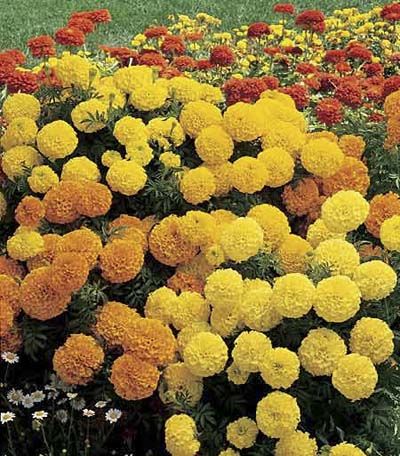
Marigolds offer a range of warm colors, including orange, yellow, white, mahogany, maroon, and creamy yellow. These versatile plants grow 6 to 36 inches high and thrive in full sun or afternoon shade in hot areas. They prefer well-drained soil and are hardy to +10ºF, making them suitable for USDA Hardiness Zones 3 to 10.
Cosmos (Cosmos Spp.)
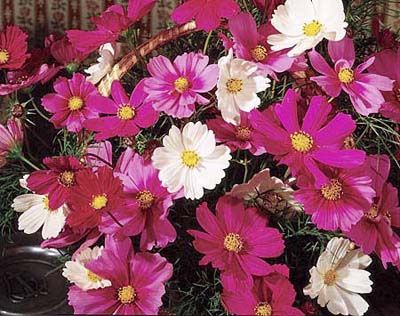
Cosmos produce daisy-like flowers in pink, maroon, white, and sometimes yellow, with yellow or red-brown centers and feathery leaves. These tall annuals grow 1 to 6 feet high and prefer full sun and well-draining to dry soil. Hardy to 0ºF, cosmos are best suited for USDA Hardiness Zones 8 to 10.
Moss Rose (Portulaca Grandiflora)
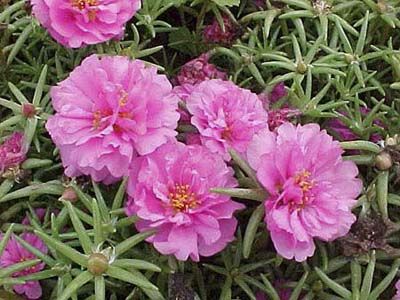
Moss rose features bright-colored, rose-like flowers and short, flat, soft “needlelike” leaves. These low-growing plants reach 4 to 8 inches in height and prefer full sun and dry, sandy soil. Hardy to -10ºF, moss rose thrives in USDA Hardiness Zones 3 to 8.
Dusty Miller (Centaurea Cineraria)
Dusty Miller is prized for its wooly, silvery-gray, filigreed foliage. Growing 8 to 24 inches tall, it prefers rich, well-drained soil and full sun. Hardy to 0ºF, Dusty Miller is suitable for USDA Hardiness Zones 8 to 10.
Common Geranium (Pelargonium x Hortorum)
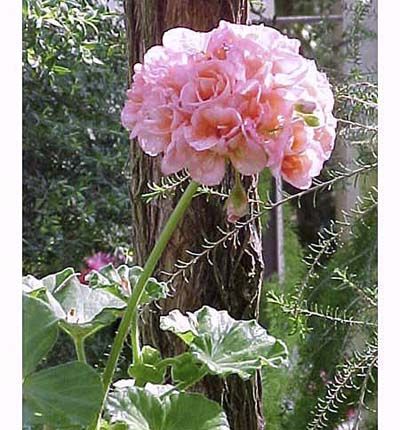
Common geraniums are succulent-stemmed plants with fuzzy, rounded leaves and large, round flower clusters. These plants can grow up to 3 feet high and prefer full sun or light shade and neutral or slightly alkaline soil. Hardy to +30ºF, geraniums are best suited for USDA Hardiness Zones 9 to 10.
Globe Amaranth (Gomphrena Globosa)
Globe amaranth produces small, round, clover-like flower heads in shades of purple, pink, white, and red. These drought-tolerant plants grow 1 to 2 feet tall and prefer full sun and well-drained soil. They are hardy in USDA Hardiness Zones 2 to 11.
California Poppy (Eschscholzia Californica)
The California poppy is known for its vibrant orange flowers and finely divided, blue-green foliage. These low-growing plants reach 12 to 18 inches in height and thrive in full sun and poor, well-drained soil. They are hardy in USDA Hardiness Zones 6 to 10.
How To Care for Drought-Resistant Annuals
Even though drought-resistant plants are pretty hardy, you still have to provide them with some routine care.
Watering Techniques
While drought-resistant annuals require less water than other plants, they still need some moisture to thrive. Water deeply but infrequently to encourage deep root growth. Use techniques such as drip irrigation or soaker hoses to deliver water directly to the roots, minimizing water waste.
Mulching for Moisture Retention
Apply a 2- to 3-inch layer of organic mulch around your plants to help retain soil moisture, suppress weeds, and regulate soil temperature. Materials such as shredded bark, straw, or compost work well for mulching drought-resistant annuals.
Fertilizing Drought-Tolerant Plants
Most drought-resistant annuals don’t require heavy fertilization. In fact, over-fertilizing can lead to excessive growth and increased water needs. Apply a balanced, slow-release fertilizer at planting time, and then sparingly throughout the growing season as needed.
Pruning and Deadheading
Pruning and deadheading your annuals encourages healthy growth and prolongs blooming. Remove spent flowers regularly to direct the plant’s energy toward new growth and blooms. Prune leggy or overgrown stems to maintain the plant’s shape and promote compact growth.
Pest and Disease Management
Even drought-resistant plants can sometimes fall prey to pests and diseases. Regularly inspect your plants for signs of trouble, such as discolored leaves, holes, or unusual growth. Use organic or chemical treatments if you need to, but opt for natural solutions when possible to protect the environment and beneficial insects.
Designing a Water-Wise Annual Garden
You can create a colorful annual garden with these drought-resistant plants.
Color Schemes and Combinations
Create visually appealing combinations by mixing plants with complementary colors and textures. For example, pair the silvery foliage of Dusty Miller with the bright blooms of zinnias or marigolds for a striking contrast.
Height and Texture Considerations
Plan your garden layout by placing taller plants like cosmos or lavatera in the back, medium-height plants like zinnias in the middle, and low-growing options like moss rose in the front. Mix plants with different leaf textures to add visual interest.
Companion Planting for Drought-Resistant Annuals
Combine drought-resistant annuals with other water-wise plants such as succulents, ornamental grasses, or drought-tolerant perennials to create a diverse and resilient garden.
Creating Focal Points
Incorporate focal points into your garden design to draw the eye and create visual interest. Use larger or more visually striking, drought-tolerant plants as centerpieces, or add garden art, such as sculptures or decorative stones, to enhance the overall aesthetic.
Our Conclusion
Drought-resistant annuals are a practical and beautiful way for gardeners to make a beautiful garden while saving water. By selecting the right plants for your climate and following proper care techniques, you can create a low-maintenance garden that thrives even in dry conditions. Plus, you’ll be contributing to environmental conservation efforts.
Looking for more in gardening? Check out our in-depth guides on trees:
